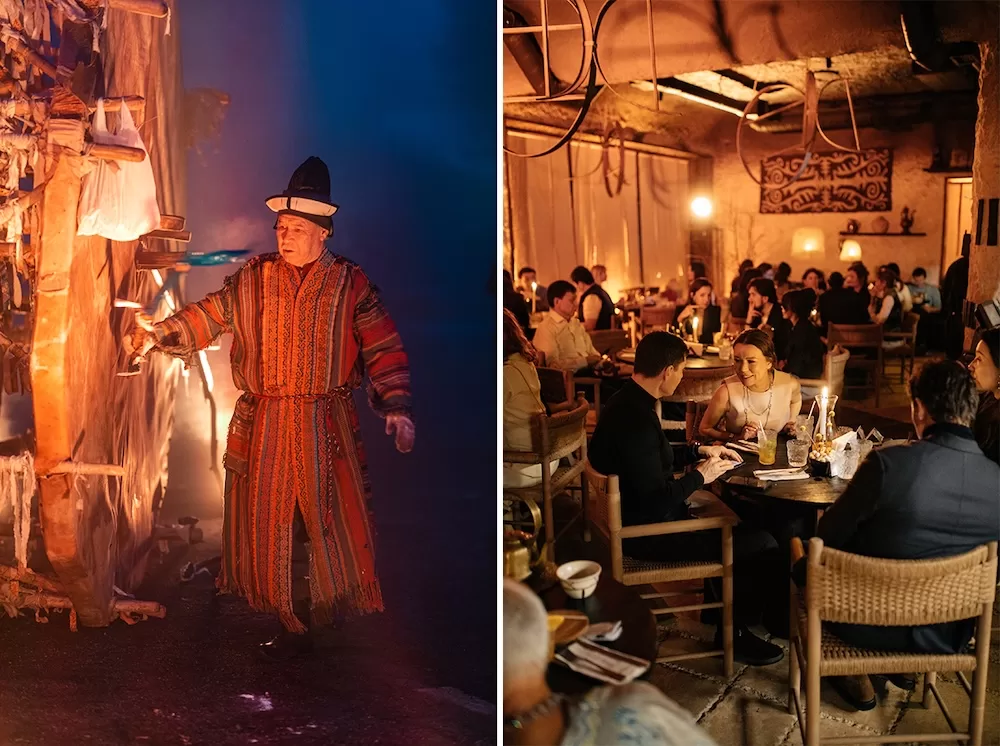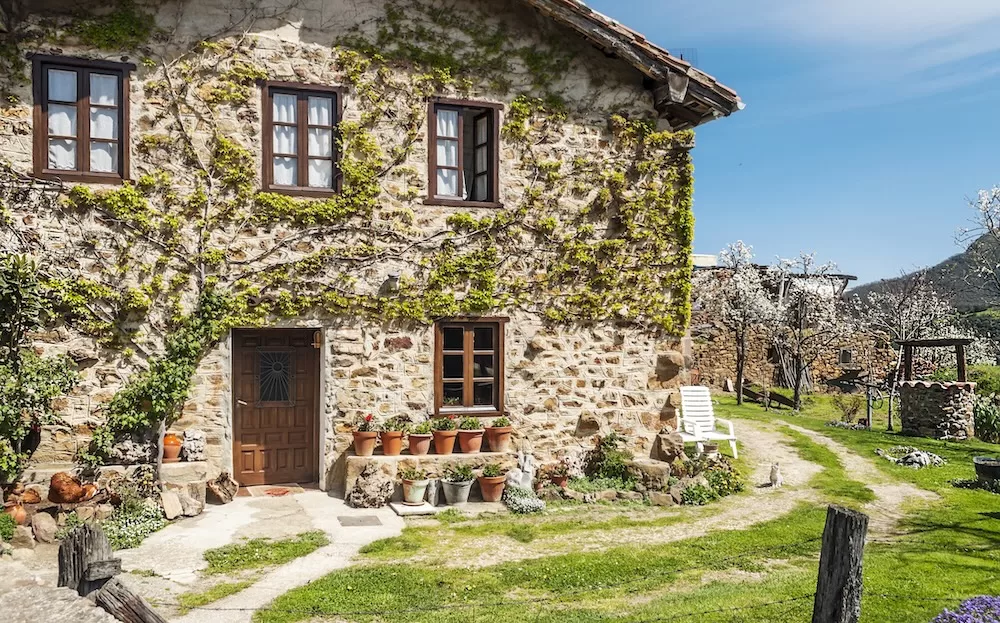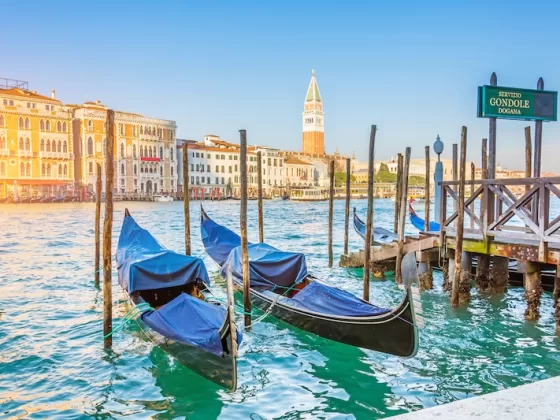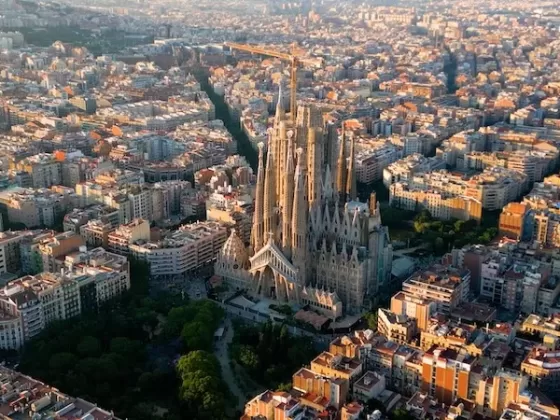A custom-made house beat, urgent with Turkic throat singing, streams through a buzzing dining room softened with adobe and felt at trendy Auyl, a hot new restaurant in the Kazakh capital of Almaty.
As diners dip their spoons into horse meat tartar, a tattooed bartender whips up a cocktail of vodka, honey, and mountain juniper with an umami surprise—smoked qurt, or dried balls of salted yogurt. At the center of it all, chef Ruslan Zakirov holds sway in an open kitchen crowned with copper sheeting, pulling hot samsa (similar to samosas) filled with mushrooms and bone marrow out of a glowing tandyr oven (much like a tandoor).
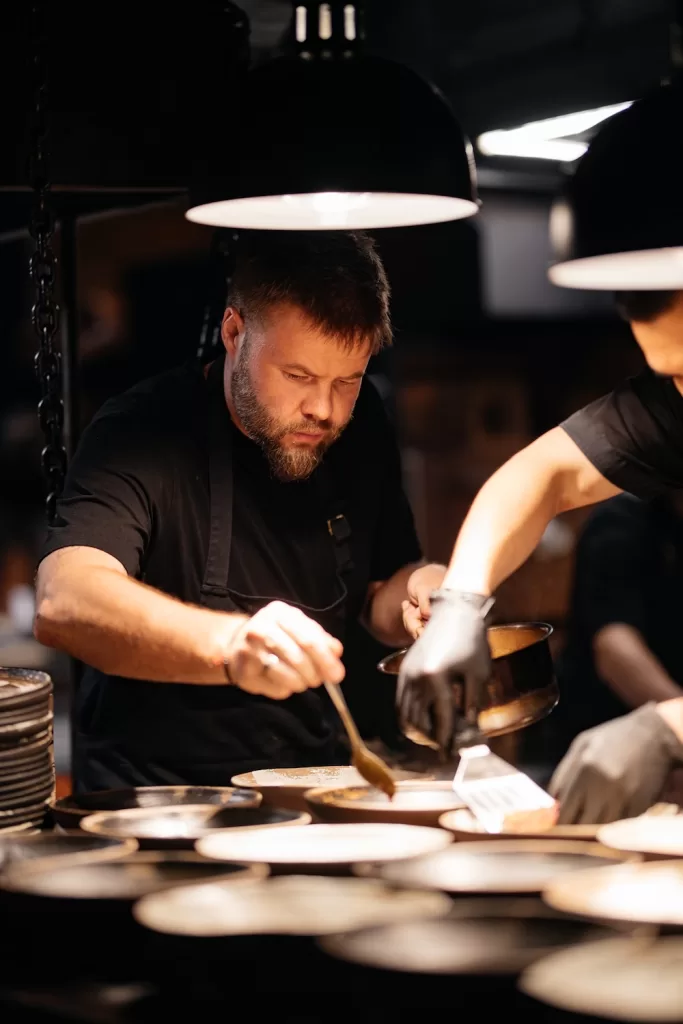
The house is packed every night, as Zakirov dishes out a 21st-century update on Kazakh food dubbed neo-nomad cuisine, in reference to the famed nomadic peoples of the Central Asian steppe. A few years ago, Kazakh cuisine seemed to be dying out as the country’s post-Soviet population grew enamored of foreign dishes.
Read More like this The Sweet Medicine of Food
Suddenly, the traditional food of nomads is being rediscovered and reinterpreted all over town, putting this Central Asian metropolis on the global culinary map. Auyl, which is an old Kazakh word for home for nomadic mountain village, is set on the southwest edge of the city, in a snowy alpine valley near the Kyrgyz border.
On sparkling winter days, Almatians ice skate at Medeu, an open-air, Soviet-era rink across the street, or ride the cable car up to the ski resort Shymbulak. In fact, before the Soviets brought their winter sports, this had been a jailau, or mountain pasture, where Kazakh nomads lived in yurts and raised sheep, horses and camels.

Read more like this: The Wisdom of the Wild
Declared incompatible with socialism, that nomadic way of life largely disappeared in the 1930s as Kazakhstan was transformed by decades of colonial rule. The neo in neo-nomad, then, is not just a fanciful reinvention. It’s an excavation of lost culinary lifeways, and a reassertion of traditional identity.
Culinary revivalism is what’s on the menu at Sandyq, Auyl’s conservative cousin in Almaty’s city center. If Auyl is scored by DJ sets, Sandyq’s understated dining room is arranged around a stage for folk music performances, and its lobby features a framed cloth from the Kaaba, the Islamic holy site in Mecca.
Read More like Mexican Eating Habits
Handed a menu, even Kazakh diners will end up asking their waiter for interpretation—not because they’re unable to read the Cyrillic Kazakh, but because the dishes themselves are dinosaurs, long extinct. There is mipalau, a kind of beef-brain pate, and maisök, a millet porridge, and qaryn bürme, where cuts of lamb are cooked inside the honeycomb membrane of sheep stomach.
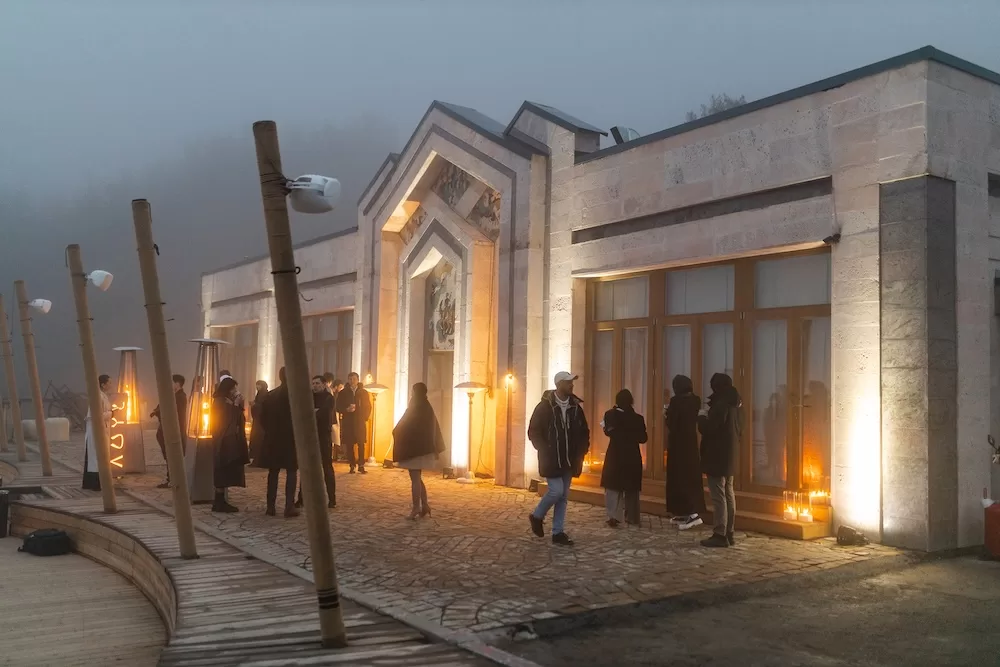
Yet there is also culinary accommodation: horse sausage pizza and horse burgers are on the menu for those looking to stay in the vicinity of their 21st century comfort zone. Delicacies like brains and tripe have become exotic to many urban Kazakhs, now several generations removed from their nomadic ancestors.
Many are willing to give it a whirl, if only to reassert their Kazakh spirit. Sandyq opened its doors in December 2021, just two months before a cultural revival spurred by Russia’s full-scale invasion of Ukraine thrust neo-nomad cuisine into the spotlight.
Kazakhstan shares the world’s longest land border with Russia and lived under its dominion for centuries, and Russian President Vladimir Putin’s gambit served as an existential wake-up call. Since the war, Kazakhstan, and Almaty especially, have taken a de-colonial turn.
Kazakh language, Kazakh music, Kazakh food—all these markers of identity have received a rush of attention, and eating revived nomad dishes is now en vogue, widely seen as a principled defense of a vulnerable nation.
When Ukrainian chef Max Kononykin opened his neo-nomad restaurant Tarih (“History”) in December 2020, he likely felt the bond of this common colonial legacy. His project was bold: Almaty’s first fine-dining spot for Kazakh cuisine, led by a chef from Kyiv.
Yet Kononykin delivered, paving the way for those to come with dishes like syrne, braised lamb reimagined through sous vide, and horse heart with bulgur risotto and mushrooms. If the runes on Tarih’s walls seem to ground the place in an age-old Turkic past, the cuisine feels rooted in an even more ancient realm: hearty, earthy, almost primordial.
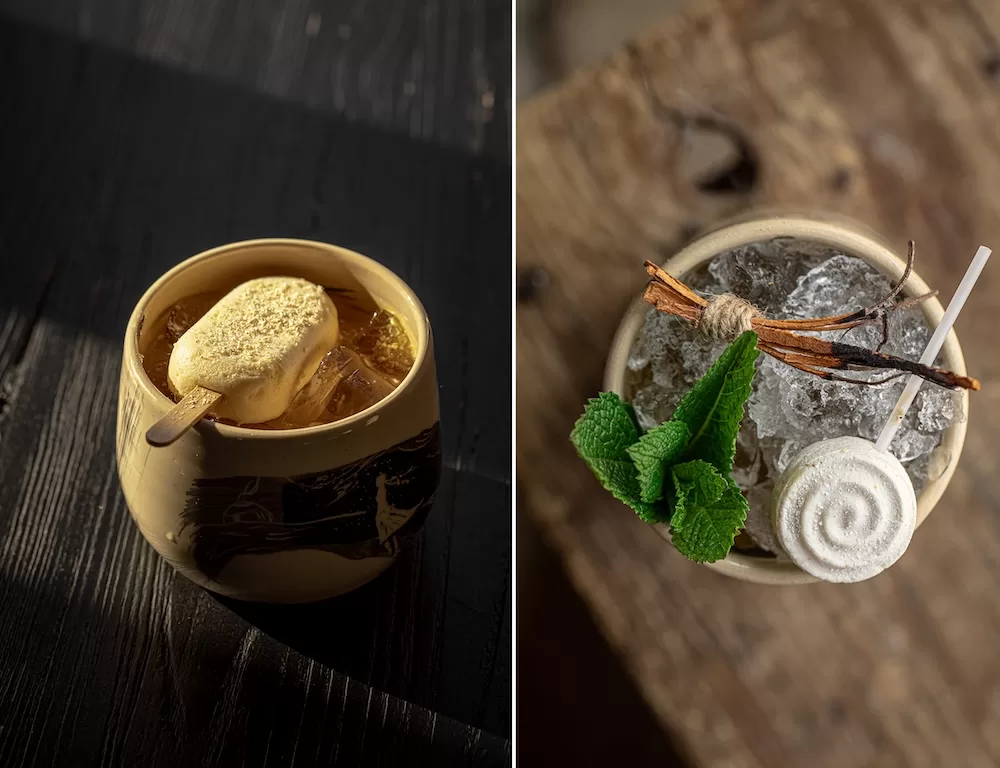
Down in the basement, Almaty’s top mixologists Pavel Bondar and Dmitriy Korolev, run Stories, a stylish speakeasy where signature cocktails honor various Kazakh cities, including local flora and referencing culinary tendencies. With every order, the barman recounts a story about the place and how the tastes came together.
Tempered by Islam, Kazakh nomads were mostly teetotalers, despite a passion for fermented horse milk. Yet somehow this smart cocktail bar has found a way to be neo-nomad, grounded in the land, its people, and its flavors.
Auyl, Sandyq, and Tarih walk the same path, and it’s a path of return. There’s a sense that Kazakhs, having exhausted their inspiration in looking outward, have found new energy returning to their culinary roots. At the core is the nomad’s steadfast partner, their livestock.
Livestock gave the nomad everything—horse hides became tents, sheeps’ wool clothed their families, while bones were used for games and divination. For centuries, the flesh and milk of sheep, horses, and camels, and later cows, has enabled nomad life in the harsh climate of the steppe.

Meat, cooked a million ways. Dairy, transformed into cream, curds, cheese and more. Nomads would acquire flour through trade, and come to know the potato and the onion and a limited set of spices, but animal products have long defined the nomadic diet.
Today they serve as the basic building blocks of neo-nomad cooking. From this palate borne of simplicity, the most remarkable recipes emerge. Take qurt. Milk is fermented into yogurt and strained, salted, and shaped into balls to be dried in the sun. The resulting hard nuggets can be gnawed on as a snack or tossed into water and rehydrated into an ayran-like drink.
Qurt has a deep, fermented funk and unusual sourness that echoes a hard cheese, so neo-nomad chefs have taken to shredding it into an illicit-looking powder that gives dishes a creamy kick. At Sandyq, it’s brilliantly mixed into the house salad dressing.
Qymyz, or fermented horse milk, is another funky dairy item that’s been prized by nomads for centuries. The drink itself is beguiling—a thin milk, made sour and effervescent through fermentation, with a smokey bottom note from barrels fumigated with meadowsweet, a local herb. At Auyl, a cocktail of scotch, seabuckthorn, passionfruit, and apricot fassionola comes with a refreshing qymyz ice cream bar.
Pastry chefs have fallen for irimshik. Acid is added to boiling milk to separate curds from whey, with the curds then boiled down until caramelizing into a dulce de leche-like fudge that is further strained and dried. Kazakh nomads would nibble irimshik with tea or add it to sugared millet flour to make a kind of halva called jent. Today, the dessert menu of nearly every neo-nomad restaurant centers on it—irimshik cheesecake, mousse and so on.
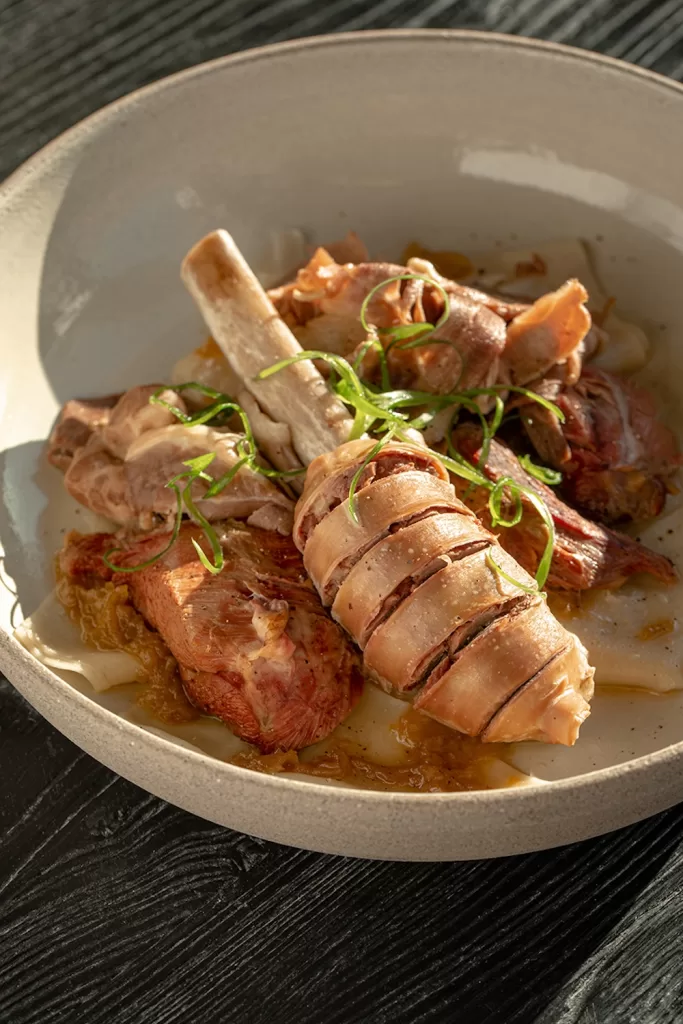
When it comes to meat, Kazakh chefs are pushing the possibilities of animal by-products. Nomads would use stomachs not just as meat baking vessels, but also as fermentation compartments for their butter. Qaryn mai, or stomach butter, is ghee that’s been stuffed in sheep gut and naturally fermented by the rennet inside.
One enterprising chef featured on a YouTube cooking show uses stomach to make gluten-free dumplings, with the meat stuffed inside tiny tripe sacks. Qūiryq mai, or fat from the rumps of Central Asian sheep, provides the tallow for most fried foods and can be slipped into everything from dumplings to samosas for an oily flavor bomb.
One thing you won’t find is meat rubs or barbecue sauce. In nomadic cuisine, the meat is rarely masked. These hearty flavors and complex foodstuffs have been with the Kazakhs all along, yet for a century Kazakh cuisine has been viewed as unsophisticated and unfit for the modern kitchen.
Even Kazakh chefs, burdened by a colonial inferiority complex, denied their own cuisine its full potential. Now, awoken by a cultural rebirth, Kazakh chefs are reevaluating the food of their childhood, and their ancestors, and finding inherent value and vast potential.
Fitting, then, that 20-year old Kazakh Darkhan Kulushbaev has emerged as the movement’s most inspiring story. Kulushbaev is the head chef at on toğyz toqsan bir, Kazakh for “1991”, referring to the year of independence. Founded by the Kazakh-language pop phenoms Ninety-One, OTTB, as it’s known, is a new kind of place for Almaty.
Read More like A Simple Recipe to Enrich the Soul
The mostly young diners and staff speak mainly Kazakh, not Russian. Open-mic nights attract Kazakh-language rappers and poets. Qymyz is on the menu next to cappuccinos, and it’s not served to raise eyebrows, but on its own terms. Barely out of high school, Kulushbaev embraces Kazakh comfort food, like a porridge from talqan, or millet flour.
Yet he also innovates with Kazakh fusion like his buralym, an alfredo pasta with qurt cheese and horse meat ravioli. In a widely seen Instagram reel, the young chef can be seen sketching ideas in a notebook, dreaming up new recipes for his people’s ancient cuisine.
The possibilities, he and Almaty have come to realize, are endless.
——————–
US-born Dennis Keen has lived in Almaty since 2013 and runs top local touring outfit Walking Almaty. Follow him on Instagram.
